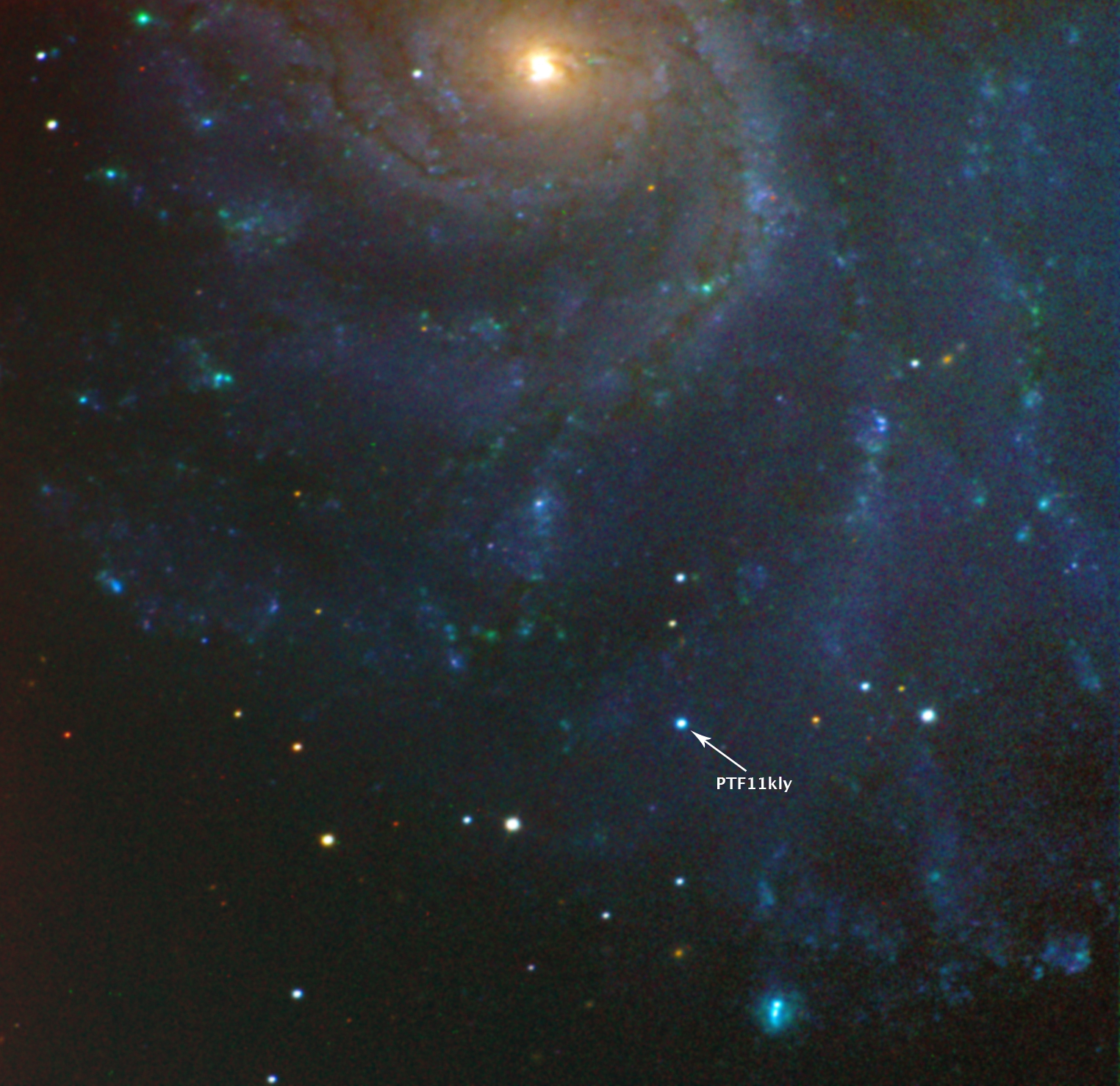by Lauren Weiss | Dec 2, 2011 | Daily Paper Summaries
Calculations say there should be evidence of alien life in our own solar system!

by Lauren Weiss | Nov 3, 2011 | Daily Paper Summaries
George Lucas dreamed of a planet with two suns. Now that Kepler scientists have found such a planet, the question arises: can it support life?

by Lauren Weiss | Oct 6, 2011 | Daily Paper Summaries
Several weeks ago, the OPERA experiment announced that they had measured neutrinos travelling faster than the speed of light. The neutrinos, which traveled from CERN to the Gran Sasso Laboratory, arrived at the detector 60 nanoseconds earlier than light (with statistical errors of 6.9 ns and systematic errors of 7.4 ns).

by Lauren Weiss | Sep 21, 2011 | Guides, Personal Experiences
When we dream of other worlds, there is one thing that drives our fantasies of life above all else: water. Most organisms on Earth rely on this molecule for survival. Although we might imagine life forms that do not require water, planets with water are the most obvious places to search for life—or at least for life as we know it.Thus, the discovery of the first potential “water world” in 2009 was a turning point in exoplanet science. At the time, I was a senior at Harvard University working with David Charbonneau, whose team and their robotic telescopes discovered the super-Earth GJ 1214b when it transited its star. In a Nature publication, Dave describes the discovery.The planet is just the right density to be made entirely of water. However, the discovery of GJ 1214b only suggests its watery nature; the planet could have a dense, rocky core and a large but light atmosphere of hydrogen and helium instead.To distinguish between these possibilities, several groups have performed transmission spectroscopy. This technique measures the starlight that passes through the planet’s atmosphere while the planet transits its star. By measuring the light transmitted at different wavelengths, it is possible to construct a spectrum of the planet’s atmosphere. Absorption and emission lines in the spectrum can reveal chemicals in the atmosphere.Counter-intuitively, the scientists studying GJ 1214b are not looking for spectral lines due to water. Models show that adding water vapor to the atmosphere of GJ 1214b would flatten the spectrum, smearing out all features. However, a high layer of clouds could also produce such a spectrum, so a flat spectrum does not...

by Lauren Weiss | Aug 29, 2011 | Current Events, Personal Experiences
Last night, I was in the Berkeley-based remote control room of the Keck telescope watching Professor Josh Bloom and his team follow up what Bloom claims to be the “supernova of the generation.” PTF11kly, a type Ia supernova discovered by the Palomar Transient Factory in California, is one of the earliest and closest type Ia supernovae ever observed.How did I stumble into such an important observation? Josh invited the Berkeley first-year graduate students to watch his team remotely observe on the Keck telescope. Even without the prospect of standing witness to scientific history in the making, the five of us were excited to watch the complex operation of Keck, the largest optical telescope in the world. While Josh facilitated observations from a control room in Waimea, Hawaii, the rest of his team controlled the instrument from a duplicate control room at UC Berkeley. From the windowless basement room with an array of plush carpets covering the otherwise sinister black-and-white tiled floor, the other first-year graduate students and I watched history happen. Using the LRIS spectrographon the Keck telescope, Josh’s team obtained one of the earliest spectra of a type Ia supernova ever observed.In yesterday’s post, Kim Phifer describes how the thermonuclear explosion of a white dwarf generates a type Ia supernova and how we can use type Ia supernova to measure distances. Historically, type Ia supernovae have been used to measure the rate of the expansion of the universe. Precise measurements of the distances and recession velocities of type Ia supernovae resulted in the discovery that the universe is expanding at an accelerating (not decelerating) rate. The cause of the acceleration is...



